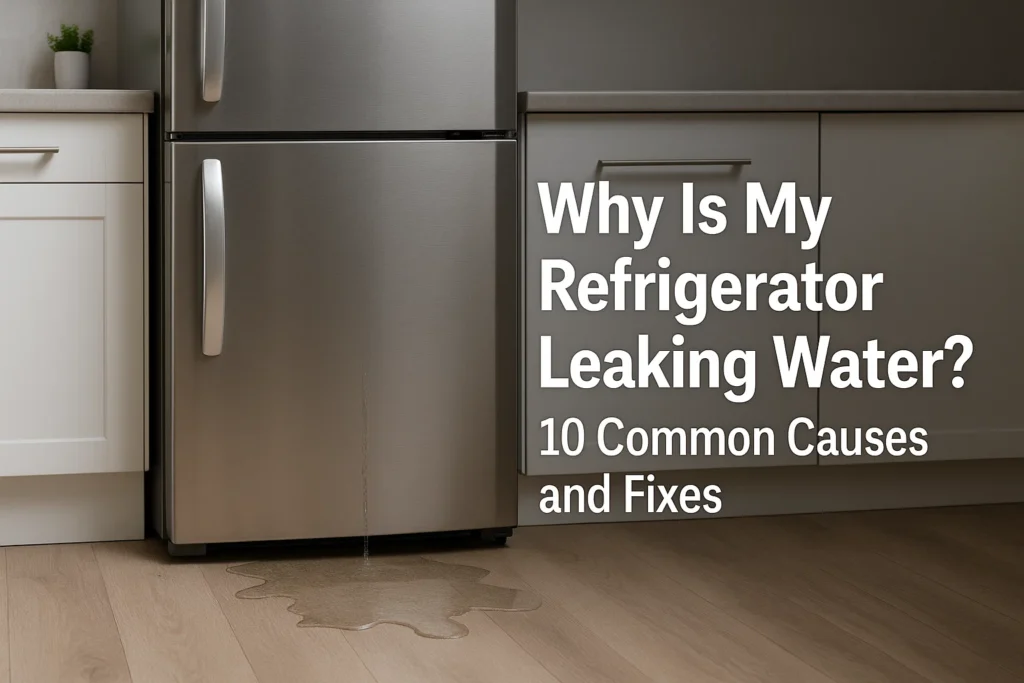Table of Contents:
- How to Spot the Problem Early
- Is It Dangerous If Your Fridge Is Leaking?
- Top 10 Causes of Refrigerator Water Leaks
- 1. Clogged or Frozen Defrost Drain
- 2. Damaged or Misaligned Water Filter
- 3. Cracked or Blocked Drain Pan
- 4. Leaky Water Inlet Valve
- 5. Faulty Door Seals
- 6. Ice Maker Malfunctions
- 7. Improper Fridge Leveling
- 8. High Humidity or Condensation Issues
- 9. Broken Water Supply Line
- 10. Excessive Food Blocking Airflow
- What to Do Immediately If Your Fridge Starts Leaking
- Signs It’s Time to Replace, Not Repair
- Can a Leaking Fridge Affect Food Safety?
- How to Prevent Fridge Leaks in the Future
- Still Leaking? Get Professional Help
Nothing is more frustrating than noticing puddles of water around your refrigerator. Not only is it inconvenient, but it can also signal an underlying issue that needs quick attention. A fridge that leaks water isn’t always broken — sometimes the cause is simple and easy to fix. Let’s explore the most common reasons why your refrigerator might be leaking and how to handle them before the problem gets worse.
How to Spot the Problem Early
If you catch the leak early, you can often avoid major repairs. Keep an eye out for:
- Small puddles under or behind the fridge
- Moisture on the shelves or drawers
- Condensation on the door seals
- Odd dripping sounds inside the unit
Early detection means easier fixes and less damage to your kitchen floor.
Is It Dangerous If Your Fridge Is Leaking?
A leaking refrigerator isn’t always an emergency, but it can become one. Water left standing on the floor can cause mold growth, slip hazards, and even damage to wooden or laminate flooring. If the leak comes from an electrical component, it may also pose a safety risk. That’s why it’s best not to ignore even minor leaks.
1. Clogged or Frozen Defrost Drain
The defrost drain is one of the most common culprits behind water leaks. Over time, food particles or ice can block it, forcing melted water to spill onto the floor instead of draining away. Read more about clogged defrost drain
How to Unclog It Safely
Unplug the fridge, then use warm water and a small brush or turkey baster to flush the drain. Avoid sharp objects that could damage the line.
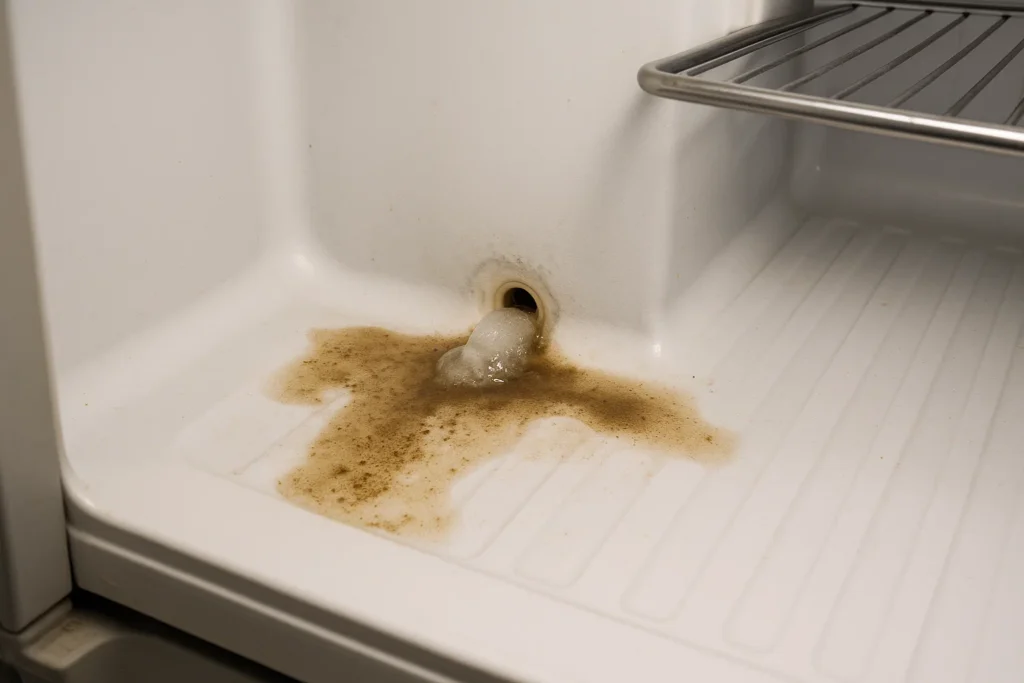
2.Damaged or Misaligned Water Filter
If your refrigerator has a built-in water dispenser, the filter may be the reason behind leaks. A cracked or poorly installed filter allows water to escape inside the fridge.
When to Replace the Filter
Most filters need replacement every six months. If you notice water pooling near the filter housing, it’s time to swap it out or reinstall it properly.
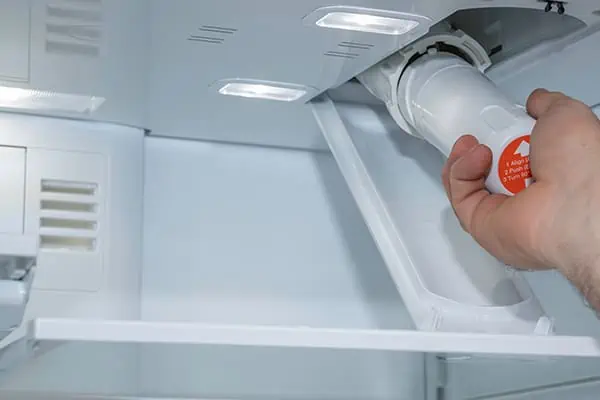
3. Cracked or Blocked Drain Pan
The drain pan sits at the bottom of your fridge and collects condensation. A crack or overflow can easily create a puddle. Read more about refrigerator drain pan problems
Can You Fix or Should You Replace?
Small cracks can sometimes be sealed with epoxy, but a damaged drain pan is usually better replaced to prevent recurring issues.
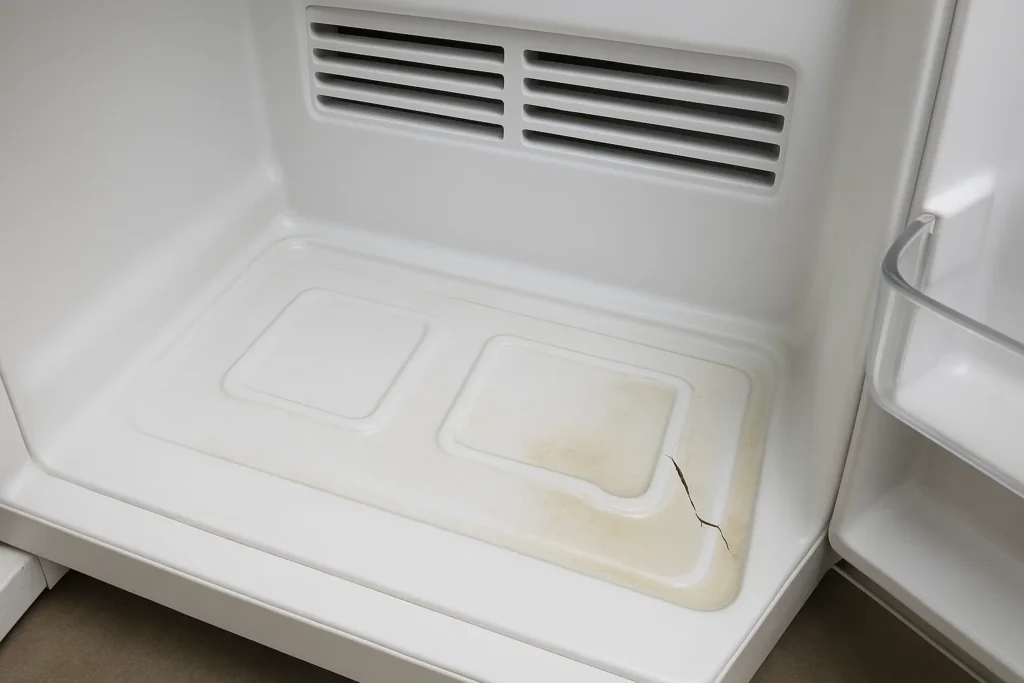
4. Leaky Water Inlet Valve
The water inlet valve supplies water to your ice maker and dispenser. A loose connection or faulty valve can cause leaks behind the fridge. Read more about water dispenser or ice maker leaking
Common Signs and Quick Fixes
If you hear dripping noises or see water near the back, check the valve connection. Tighten it gently, but if it’s cracked, replacement is the safest option.
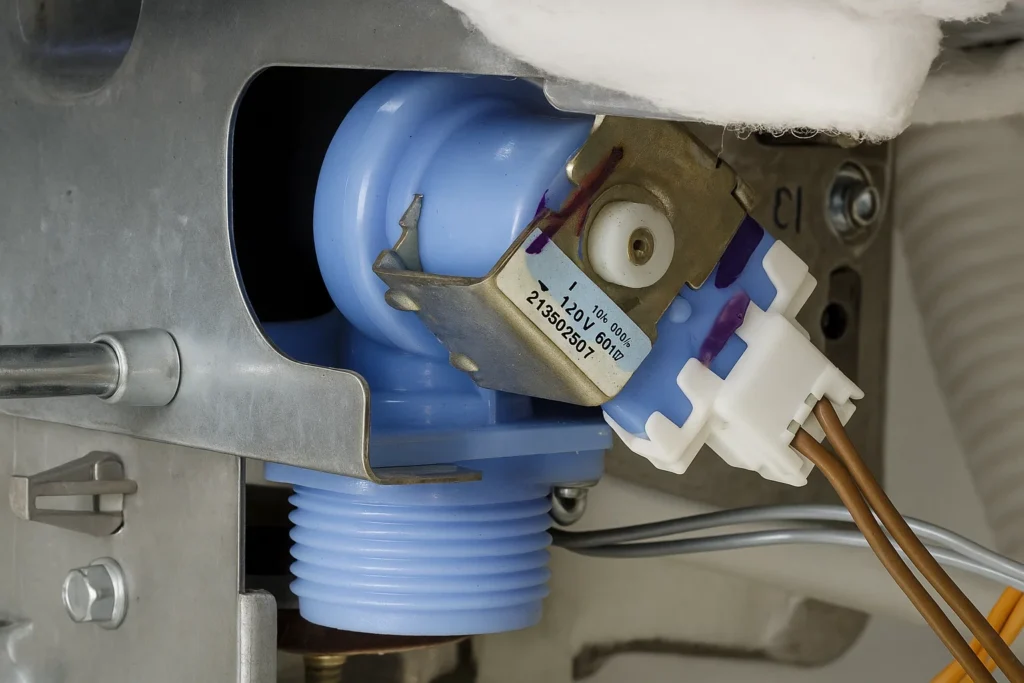
5. Faulty Door Seals
Worn or dirty door seals let warm air inside, causing excess condensation that drips into the fridge.
How Seals Can Lead to Water Build-Up
Check if your fridge door closes tightly. If not, clean the seals with warm soapy water or replace them to restore efficiency.
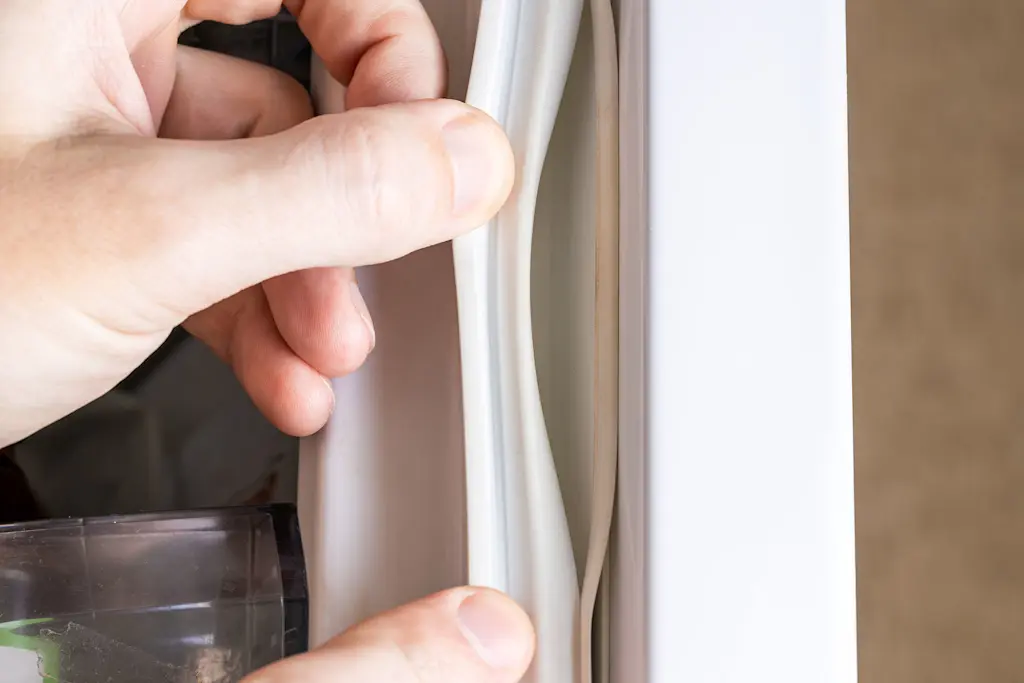
6. Ice Maker Malfunctions
A faulty ice maker can leak water inside or behind your refrigerator.
Ice Maker Leaks and What to Do
Inspect the ice tray and water line. If water is dripping into the freezer or pooling below, the ice maker may need repair or replacement.
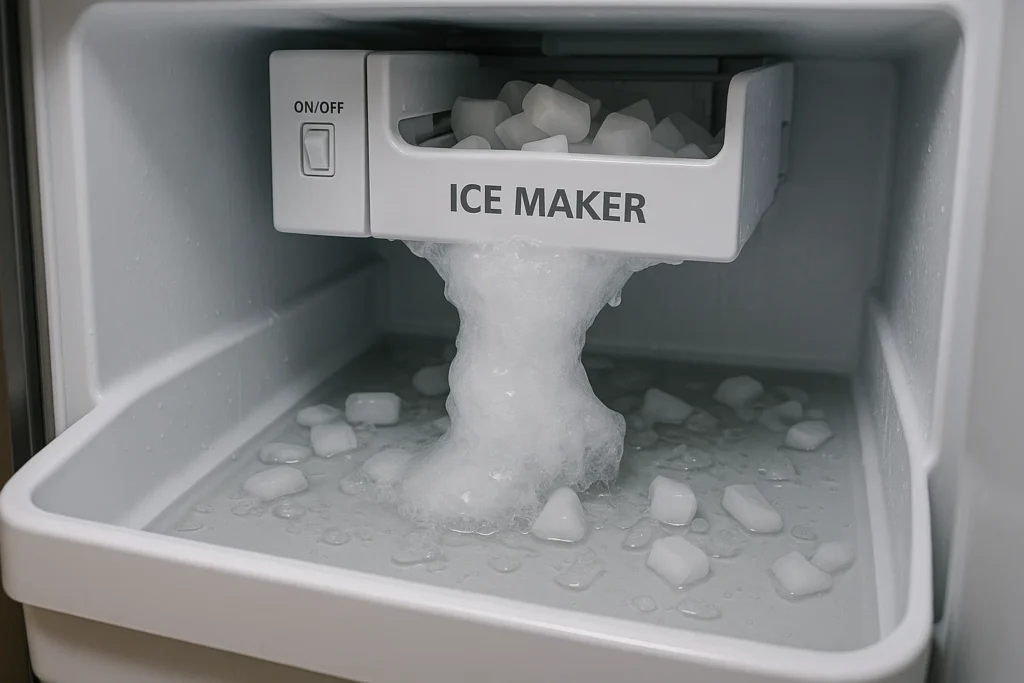
7. Improper Fridge Leveling
Yes, even the way your fridge stands can cause leaks. A tilt prevents proper drainage, sending water to the floor instead.
How Tilt Affects Drainage
Use a level tool and adjust the fridge legs until the unit is perfectly balanced. This ensures water flows into the drain pan, not onto your kitchen floor.
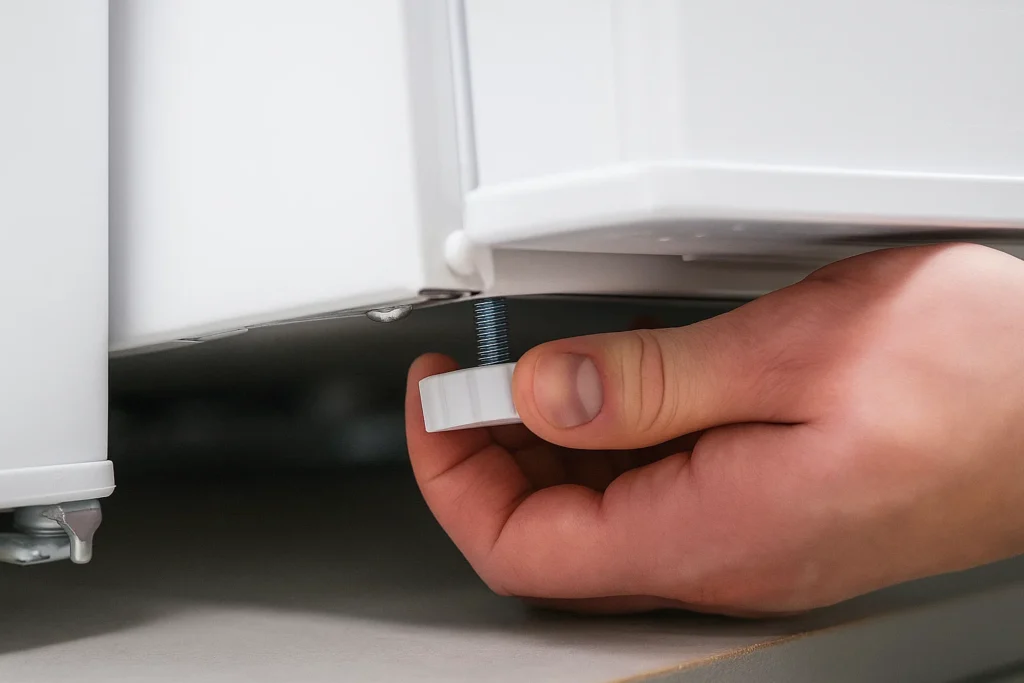
8. High Humidity or Condensation Issues
In hot or humid climates, condensation builds up faster than usual.
What to Adjust in Hot Weather
Set the fridge temperature correctly (around 37–40°F / 3–4°C) and avoid leaving the door open for too long. This reduces unnecessary moisture.
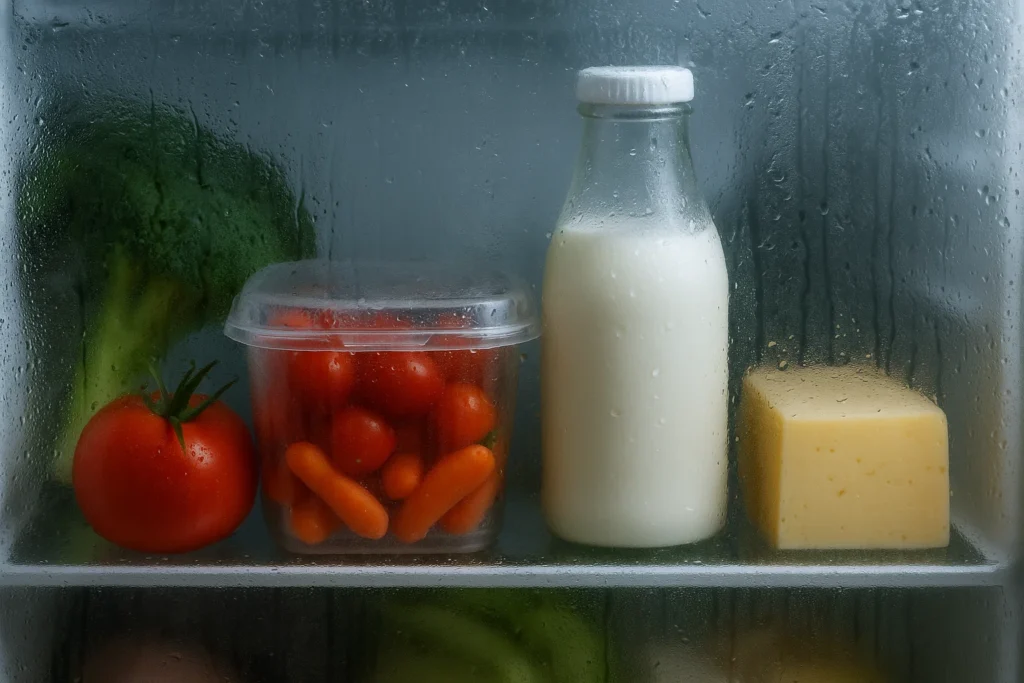
9. Broken Water Supply Line
If your fridge is connected to a water line, a crack or loose fitting could be the source of the leak.
DIY or Call a Technician?
You can replace a small water line yourself if you’re comfortable with plumbing. But if the leak is hidden inside the wall or behind the unit, it’s best to call a professional. 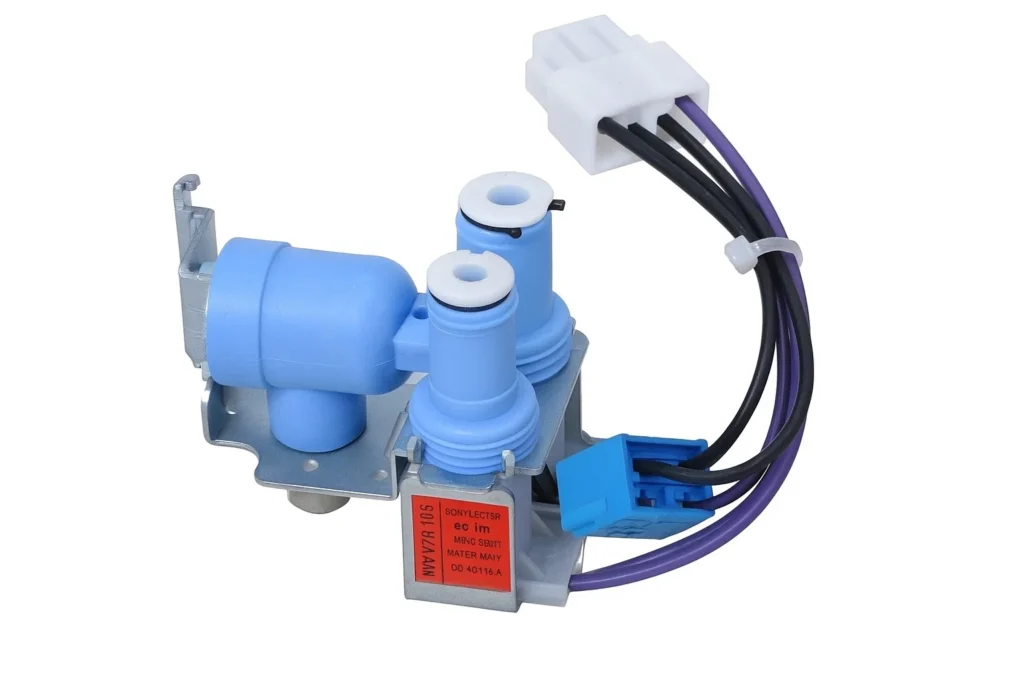
10. Excessive Food Blocking Airflow
Overloading your fridge can trap cold air and increase condensation.
How Overloading Affects Your Fridge
Keep food organized and leave space for air circulation. This prevents water from building up on shelves and drawers.
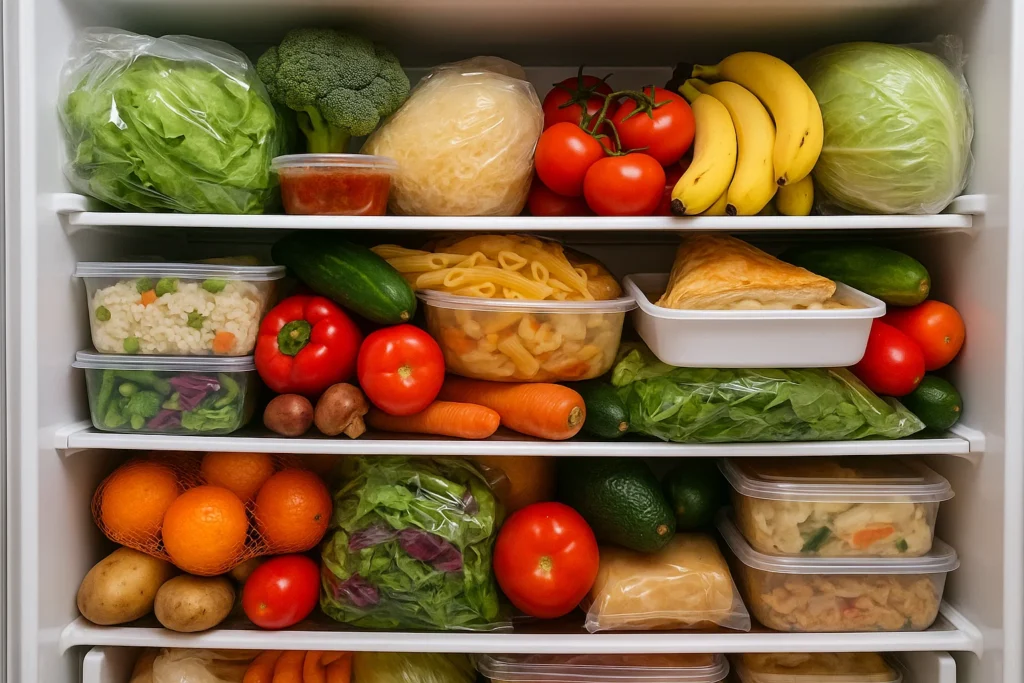
What to Do Immediately If Your Fridge Starts Leaking
Before diving into repairs or calling a technician, there are a few steps you should take right away when you notice fridge leaking water:
- Unplug the appliance to prevent any electrical hazards — water and electricity don’t mix.
- Soak up standing water with towels to avoid damage to your floor.
- Pull the fridge away from the wall to see if the fridge leaking at back or if the water is coming from underneath.
- Check the temperature settings — sometimes a fridge set too cold can create excess frost that melts unpredictably.
These simple first actions help you assess whether it’s a serious refrigerator water leak or something you can handle yourself.
Signs It’s Time to Replace, Not Repair
In some cases, ongoing fridge leak from bottom or consistent water puddles indicate a bigger issue that repair won’t fix. Here are red flags:
- Leaks return despite fixing the drain or replacing the filter
- Cracks appear in multiple internal parts like the drain pan or interior lining
- The fridge is over 12–15 years old and parts are no longer available
- Your energy bills have risen — older units struggle to maintain temperature efficiently
If several of these signs are present, a new refrigerator might be a more cost-effective long-term solution.
Can a Leaking Fridge Affect Food Safety?
Surprisingly, yes. A refrigerator water leak can indicate inconsistent internal temperatures, which in turn may cause food to spoil more quickly. Excess moisture also encourages bacterial growth in drawers and near seals. Keep an eye out for:
- Unusual odors inside the fridge
- Slimy residue under produce drawers
- Food that spoils before its expiration date
This isn’t just an inconvenience — it can affect your health and your grocery budget.
How to Prevent Fridge Leaks in the Future
Routine maintenance is key to avoiding a fridge leak from bottom or back:
- Clean the defrost drain every 6 months
- Inspect the water line and filter regularly for signs of wear or cracks
- Don’t overload your fridge, especially around airflow vents
- Keep door seals clean to maintain proper insulation
- Level your fridge after any move or adjustment
With these habits, you can significantly reduce the risk of water-related issues and extend the lifespan of your appliance.
Still Leaking? Get Professional Help
If you’ve checked all these common causes and your fridge is still leaking, it’s time to call a repair service.
Fast and Reliable Fridge Repair in New York
A professional technician can quickly identify hidden problems, from faulty internal parts to complex electrical issues. If you’re in New York and need urgent refrigerator repair, don’t wait — call a trusted local service to prevent further damage and keep your fridge running smoothly.
